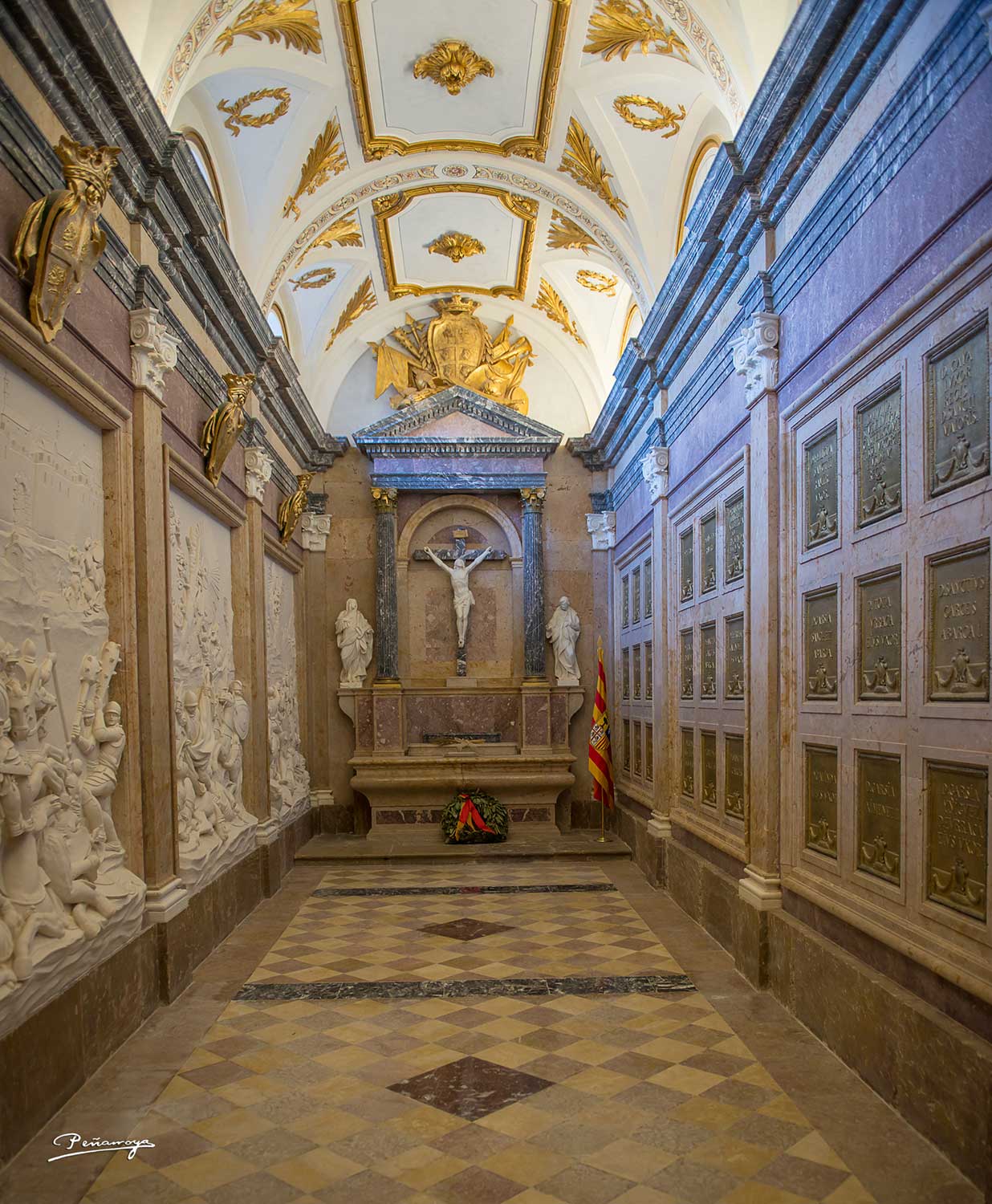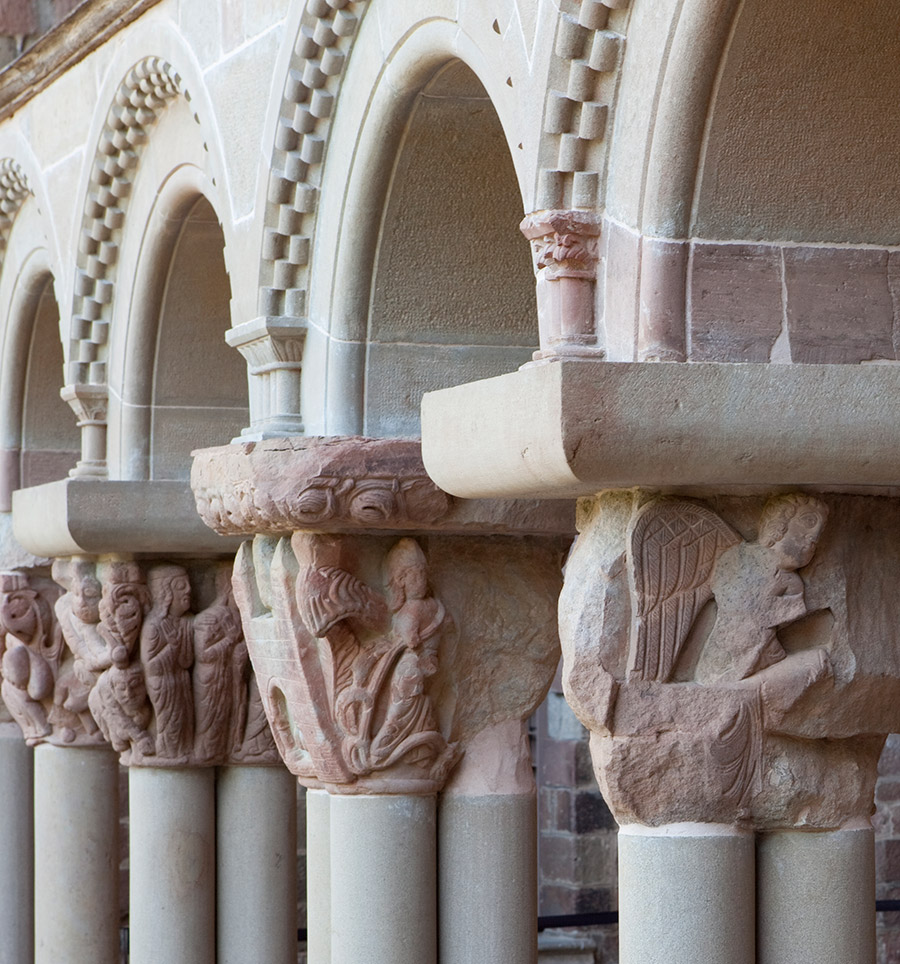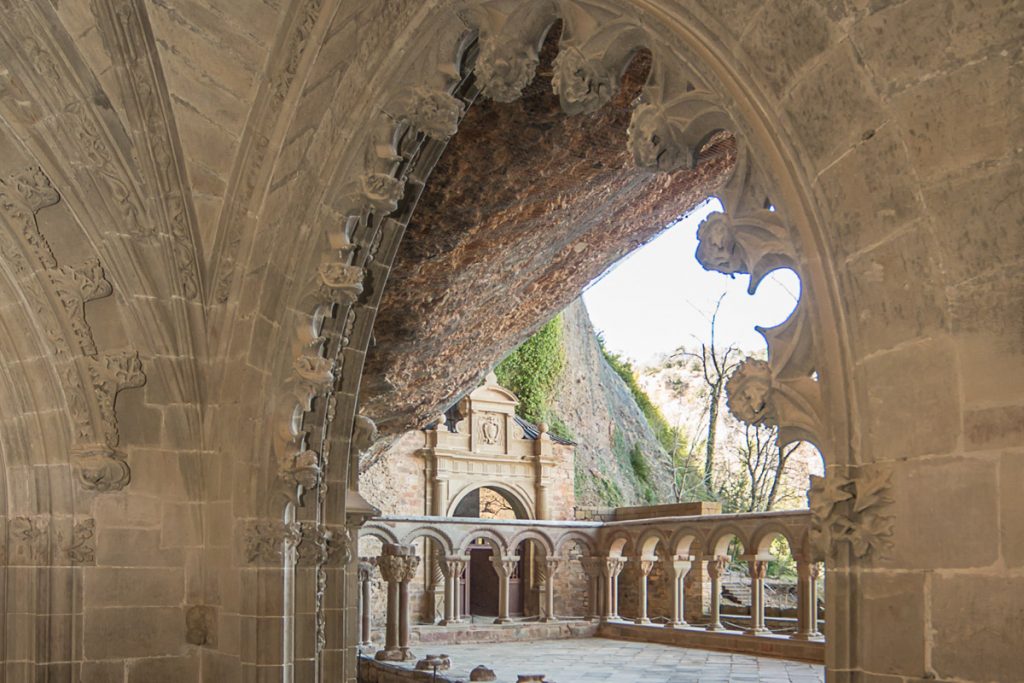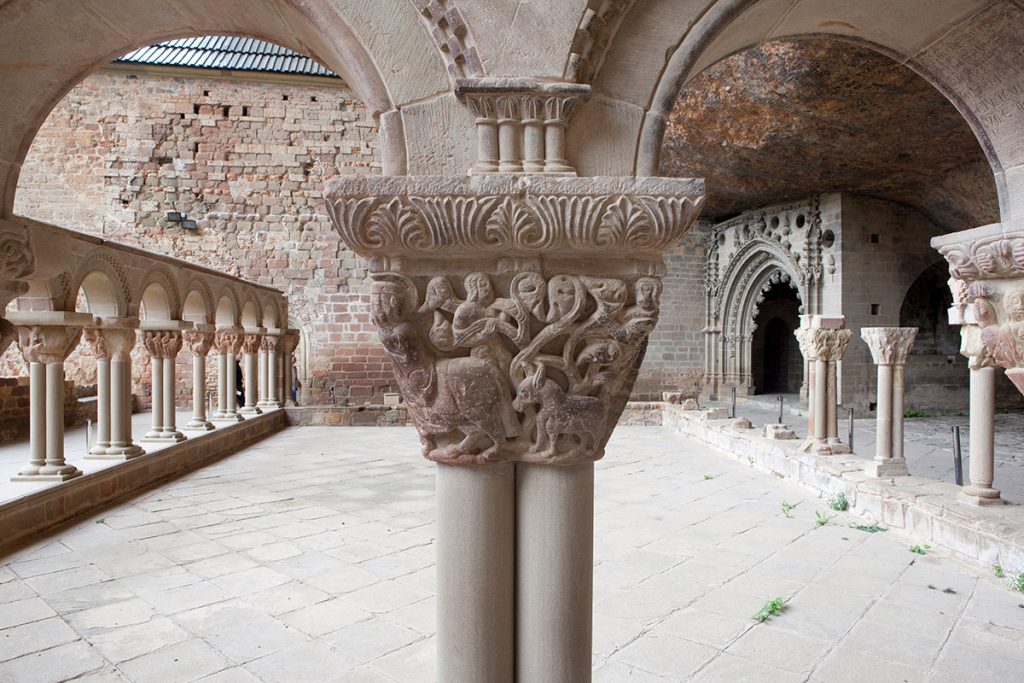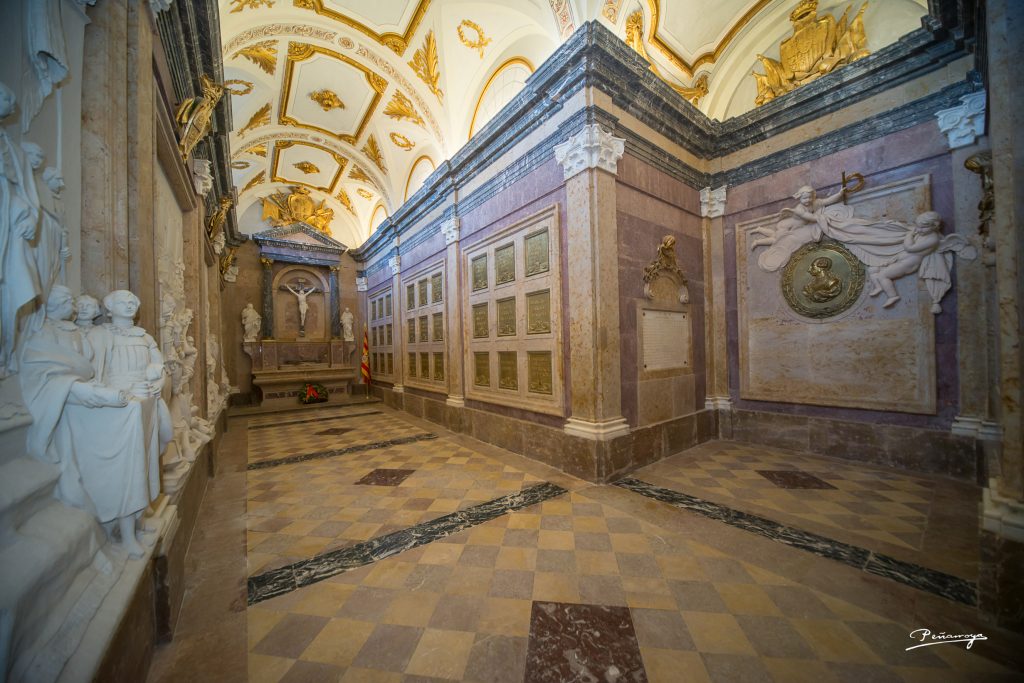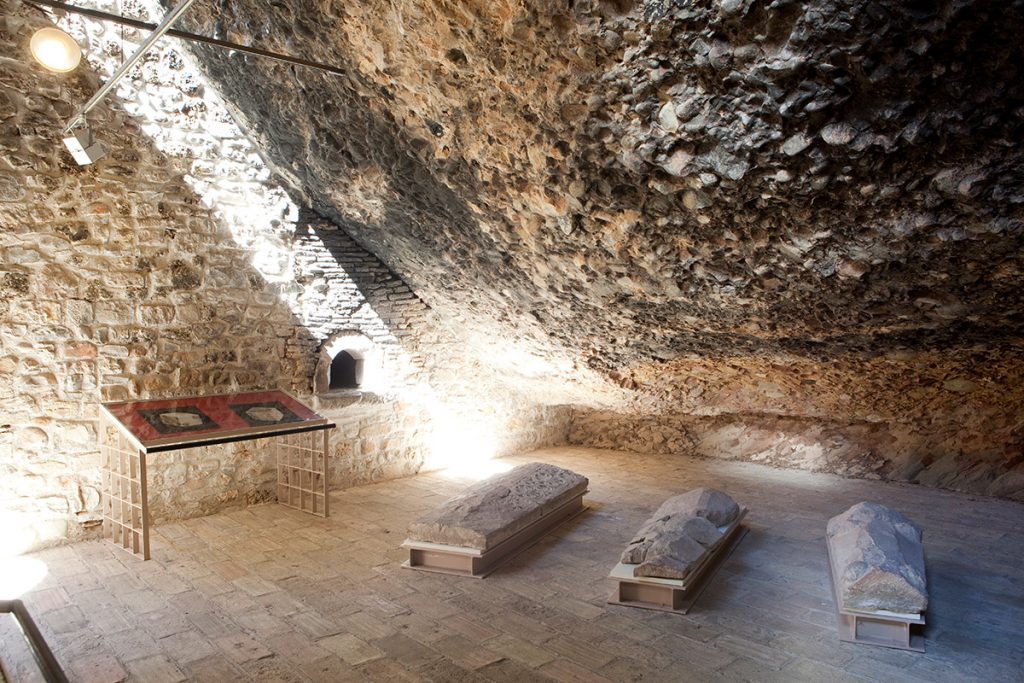Covered by the huge rock that gives it its name, the group, that encompasses a wide chronology that begins in the 10th century, appears perfectly camouflaged with its exceptional natural environment. In its interior stands out the pre-Romanesque church, the paintings of San Cosme and San Damián, of the 12th century, the designated Pantheon of Nobles, the superior church, consecrated in 1094, and the Gothic chapel of San Victorián, but above all stands out the magnificent Romanesque cloister, work of two different workshops. To all this one must add other buildings posterior to the medieval centuries, among which must be indicated the Real Pantheon, of neoclassic style, erected in the last third of the 18th century.
The authentic origins of the monastery are lost in the darkness of the high medieval times and it was supposed to have sheltered hermitages, though the historical information leads us to the foundation of a small monastic centre devoted to San Juan Bautista in the 10th century, of which some elements survive. Ruined around the end of such century, it was re founded under the name of San Juan de la Peña by Sancho the Major of Navarra in the first third of the 11th century. It was this monarch who introduced in it the rule of San Benito, fundamental rule in the medieval Europe. Throughout said century, the centre was enlarged with new constructions when converted into Kings Pantheon and favourite monastery of the incipient Aragon Monarchy that endowed it with numerous goods.
Considered by the tradition as the cradle of the Kingdom of Aragon, it was a customary stop on the Road of Santiago and place of legends, and among them stands out the one that links this place with the Holy Grail.
A meaningful date was that of the 22nd of March, 1071, when the Monastery of San Juan de la Peña was the stage of the introduction, for the first time in the Iberian Peninsula, of the Roman liturgical ceremony, followed in all of the Churches of the West, that put an end to the ancient Hispanic-Visigothic ceremony and supposed the definitive accommodation of the Aragon church to the standards marked by the Pontificated.
However, from the second half of the 12th century certain decadence began that was stressed in the following period, and even more from the 14th century. The end of the gifts were the characteristics of this era, the patrimonial losses, the multiple cases before numerous petitions, and especially with the bishoprics where their properties were located (Jaca -Huesca, Pamplona and Zaragoza), the debts, the deterioration of the constructions due to its peculiar location and various fires that resulted devastating. With the last of them, in 1675, that lasted three days, the necessary habitability for the monastic life was lost, therefore was planned the construction of the New Monastery.







